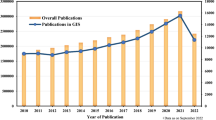Abstract
Architectural solutions to information integration have extensively appeared during the last years, mostly from the federated system research field. Some of these solutions were created to deal with geographic information, whose inherent features make the integration process particularly complex. Among others, the use of ontologies has been proposed as a way of supporting an automated integration. However, how to specify and use a geographic ontology is not so clear in this context. In this paper, we introduce an ontology-based architectural solution as an extension of a federated system (Information Broker) built by the Italian Agency for Environmental Protection and Technical Services (APAT). Our extension is aimed at improving integration by adding semantic features through the use of ontologies and the ISO 19100 standards.
Access this chapter
Tax calculation will be finalised at checkout
Purchases are for personal use only
Preview
Unable to display preview. Download preview PDF.
Similar content being viewed by others
References
Gruber, T.: A translation approach to portable ontology specifications. Knowledge Acquisition 5(2), 199–220 (1993)
Parent, C., Spaccapietra, S., Zimányi, E.: Spatio-temporal conceptual models: data structures + space + time. In: Proceedings of the GIS 1999: 7th ACM international symposium on Advances in geographic information systems, pp. 26–33. ACM Press, New York, NY, USA (1999)
Borges, K., Davis, C., Laender, A.: Omt-g: An object-oriented data model for geographic applications. Geoinformatica 5, 221–260 (2001)
Kalfoglou, Y., Schorlemmer, M.: Ontology mapping: the state of the art. The Knowledge Engineering Review 18(1), 1–31 (2003)
Euzenat, J., Shvaiko, P.: Ontology matching. Springer, Heidelberg (2007)
Mark, D.M., Skupin, A., Smith, B.: Features, objects, and other things: Ontological distinctions in the geographic domain. In: Montello, D.R. (ed.) COSIT 2001. LNCS, vol. 2205, pp. 488–502. Springer, Heidelberg (2001)
Calefato, F., Colagrossi, A., Gendarmi, D., Lanubile, F., Semeraro, G.: An information broker for integrating heterogeneous hydrologic data sources: A web services approach. In: Xu, A.M., Chaudhry, L., Guarino, S.N. (eds.) Research and Practical Issues of Enterprise Inf. Sys. IFIP Series, vol. 205, Springer, Heidelberg (2006)
Gendarmi, D., Lanubile, F., Lichelli, O., Semeraro, G., Colagrossi, A.: Water protection information management by syntactic and semantic interoperability of heterogeneous repositories. In: Proceedings of the ISESS 2007 (2007)
Buccella, A., Cechich, A.: Towards integration of geographic information systems. Electronic Notes in Theoretical Computer Science 168, 45–59 (2007)
Buccella, A., Cechich, A., Brisaboa, N.R.: A three-level approach to ontology merging. In: Gelbukh, A., de Albornoz, Á., Terashima-Marín, H. (eds.) MICAI 2005. LNCS (LNAI), vol. 3789, pp. 80–89. Springer, Heidelberg (2005)
Geographic information. Rules for Application Schema. Draft Int. Std. 19109, ISO/IEC (2005)
Geographic information. Geographic Information and Methodology for Feature Cataloguing. Draft International standard 19110, ISO/IEC (2005)
Geographic information. Spatial Schema. Int. Std. 19107, ISO/IEC (2003)
Belussi, A., Negri, M., Pelagatti, G.: An iso tc 211 conformant approach to model spatial integrity constraints in the conceptual design of geographical databases. In: ER (Workshops), pp. 100–109 (2006)
Jang, S., Kim, T.J.: Modeling an interoperable multimodal travel guide system using the iso 19100 series of international standards. In: Proceedings of the GIS 2006, pp. 115–122. ACM Press, New York (2006)
Horrocks, I., Hayes, P., Patel-Schneider, P.: OWL web ontology language semantics and abstract syntax. Technical report (February (2004)
Haarslev, V., Moller, R.: Racer system description. In: Lambrix, P., Borgida, A., Lenzerini, M., Moller, R., Patel-Schneider, P. (eds.) Proceedings of the CEUR-WS International Workshop on DL, vol. 22 (1999)
Rodríguez, M.A., Egenhofer, M.J.: Comparing geospatial entity classes: An asymmetric and context-dependent similarity measure. International Journal of Geographical Information Science 18(3), 229–256 (2004)
Visser, U. (ed.): Intelligent Information Integration for the Semantic Web. LNCS (LNAI), vol. 3159. Springer, Heidelberg (2004)
Hakimpour, F.: Using Ontologies to Resolve Semantic Heterogeneity for Integrating Spatial Database Schemata. PhD thesis, Zurich University (2003)
Fonseca, F.: Ontology-driven Geographic Information Systems. PhD thesis, University of Maine (2001)
Stoimenov, L., Stanimirovic, A., Djordjevic-Kajan, S.: Discovering mappings between ontologies in semantic integration process. In: Proceedings of the AGILE 2006, Visegrád, Hungary, pp. 213–219 (2006)
Aerts, K., Maesen, K., van Rompaey, A.: A practical example of semantic interoperability of large-scale topographic databases using semantic web technologies. In: Proceedings of the AGILE 2006, Visegrád, Hungary, pp. 35–42 (2006)
Janowicz, K.: Sim-dl: Towards a semantic similarity measurement theory for the description logic cnr in geographic information retrieval. In: OTM Workshops (2), pp. 1681–1692 (2006)
Author information
Authors and Affiliations
Editor information
Rights and permissions
Copyright information
© 2008 Springer-Verlag Berlin Heidelberg
About this chapter
Cite this chapter
Buccella, A., Gendarmi, D., Lanubile, F., Semeraro, G., Cechich, A., Colagrossi, A. (2008). A Layered Ontology-Based Architecture for Integrating Geographic Information. In: Nguyen, N.T., Katarzyniak, R. (eds) New Challenges in Applied Intelligence Technologies. Studies in Computational Intelligence, vol 134. Springer, Berlin, Heidelberg. https://doi.org/10.1007/978-3-540-79355-7_13
Download citation
DOI: https://doi.org/10.1007/978-3-540-79355-7_13
Publisher Name: Springer, Berlin, Heidelberg
Print ISBN: 978-3-540-79354-0
Online ISBN: 978-3-540-79355-7
eBook Packages: EngineeringEngineering (R0)




